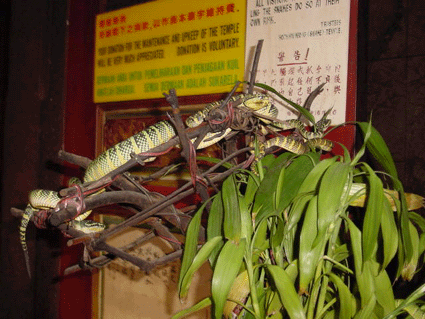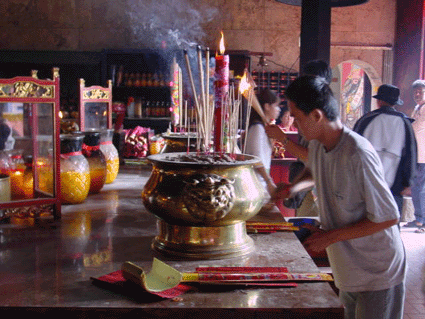 Pulau Jerejak is only minutes away from Penang city life yet tucked away among the magnificence of a lush tropical rainforest; also known as the "virgin jungle" island as it is one of the few reamining preserves of primary forest in Malaysia.
Pulau Jerejak is only minutes away from Penang city life yet tucked away among the magnificence of a lush tropical rainforest; also known as the "virgin jungle" island as it is one of the few reamining preserves of primary forest in Malaysia.A virtually undisturbed island graced with the rich diversity of 362ha of over 210 species of flora and fauna. Towering tropical trees, lingering lianas and exotic orchids prove to be shelters to some of the most remarkable living creatures, such as the Monitor Lizard and the White-Bellied Sea Eagle.
The island also boasts of an ancient emerald environment, older than the equatorial forests of the Amazon or the Congo, thus producing a marvellous ecosystem that is both inspiring and engaging. Equally intriguing is the island's hisory as a penal colony – a mystical tourch tot he surounding pristine nature.
Jerejak Resort and Spa
 Located directly across from Penang, Jerejak Resort and Spa is a wonderful stopover when you visit the Northern hub of Malaysia.
Located directly across from Penang, Jerejak Resort and Spa is a wonderful stopover when you visit the Northern hub of Malaysia. The resort is graced with the rich diversity of flora and fauna. This is one getaway where time seems to have stopped – if only to preserve the natural wonders of the island. Pulau Jerejak also boasts of a ancient emerald environment, older than the equatorial forests of the Amazon or the Congo with an ecosystem that is both inspiring and engaging. With such an interesting backdrop, one can easily indulge in your wild side at the Adventure Village or simply rejuvenate mind, body and soul at the Spa Village.
The choice is entirely yours!

 Probably the only one of its kind in the world. The temple honours a resident named Chor Soo Kong, who had healing powers. He was a Buddhist monk, who moved to Penang. Some devotees from as far away as Singapore and Taiwan come to pray in the temple on Chor Soo Kong's birthday (the sixth day of the first lunar month). The temple was built in about 1850 and is dedicated to Char Soo Kong. The statue of the deified healer was brought to Penang by a monk from China. The legend is that this pious monk gave shelter to the snakes of the jungle; when the temple was completed, the snakes moved
Probably the only one of its kind in the world. The temple honours a resident named Chor Soo Kong, who had healing powers. He was a Buddhist monk, who moved to Penang. Some devotees from as far away as Singapore and Taiwan come to pray in the temple on Chor Soo Kong's birthday (the sixth day of the first lunar month). The temple was built in about 1850 and is dedicated to Char Soo Kong. The statue of the deified healer was brought to Penang by a monk from China. The legend is that this pious monk gave shelter to the snakes of the jungle; when the temple was completed, the snakes moved
